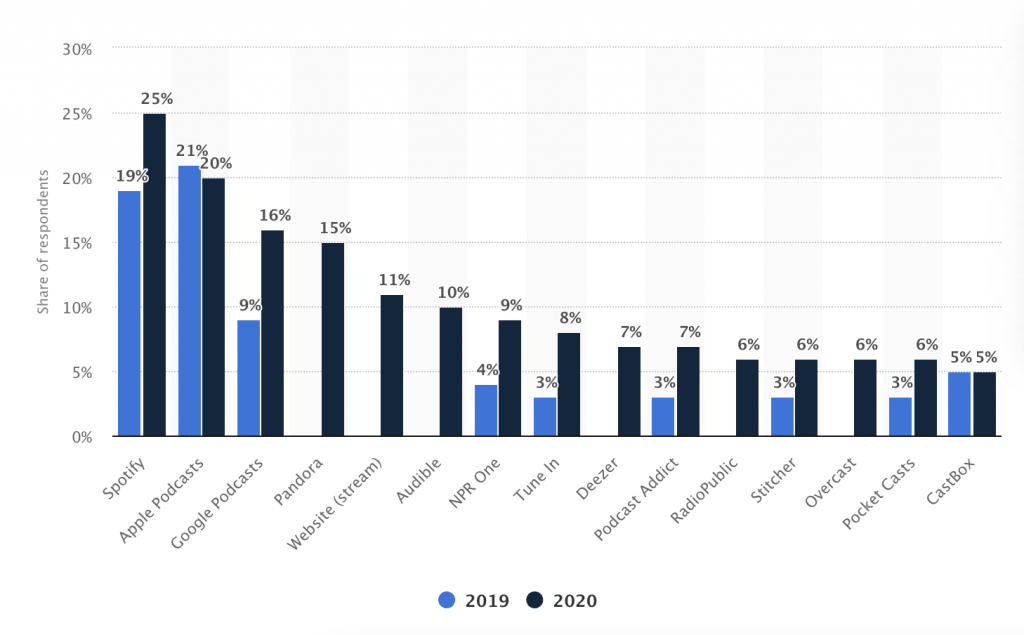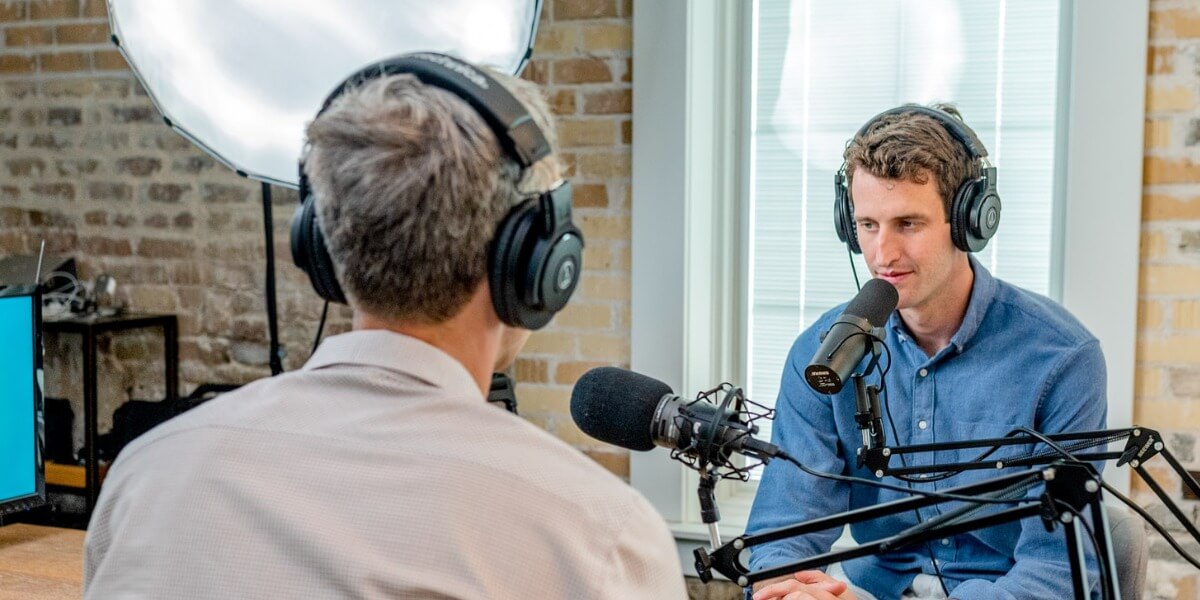B2B podcasting has emerged as a powerful marketing enabler providing organizations an effective platform to be heard. Yet, there are several mistakes that firms can make in the process. Some of these include not having a clear purpose for the podcast, not listening to feedback and reviews, not sticking to an outline or script during recording, or simply forgetting about their podcasts altogether.
According to Nielsen’s Podcast Listener Buying Power report, the total podcast audience grew at a compound average growth rate of 20% between 2014 and 2019. In a fiercely competitive market firms honestly can’t afford to blunder. The adoption of podcasting for B2B marketers will be fruitful if they consider these top seven best practices:
1. Define a clear purpose
Think about why you want to have a podcast and who you want to serve with it. Take time to research relevant content topics that answer the audience’s most pressing needs. Knowing your audience is key to build on what they would expect from your show. Lindsey Groepper, President of B2B SaaS PR agency BLASTMedia shared with Forbes that podcasting for B2B marketers must start with defining the ‘why’: ‘why would someone listen’ and ‘why is this valuable.’ Also, don’t forget to tailor its frequency to something you can stay committed to in the long run.
2. Keep things short and sweet
Duration is incredibly important when it comes to holding your audience’s attention. 20-40 minutes are an ideal benchmark for creating snackable episodes, depending on your subject matter and format. Formats can range from being a monologue, a dialogue, to an interview, a panel-based conversation, or a branded-content podcast. Identify formats that work best in your industry. Most podcasts listeners are multitasking while tuning in to an episode. So peppering your content with quick tips and how-tos will help ensure they stay hooked beyond your first episode.
3. Build credibility by telling your own story
You don’t have to be a professional journalist or public speaker to create compelling podcasts and you’re not limited by one format either. A conversational style will come across as more authentic, and the listener can relate easier when they hear someone talking about their struggles with scaling up their business or dealing with competition from another player in the market who has deeper pockets than them.
4. Bring diverse hosts onboard
Business leaders are constantly researching for contextual solutions based on their unique needs. Eager to make informed decisions they tune into podcasts for advice from different subject matter experts to glean a multi-dimensional perspective on their next move. The McKinsey Podcast, for example, features in-depth conversations with a range of thought leaders in the business and management space. The company successfully taps into a wide pool of listeners interested in varied themes like the essentials of innovation, the future of energy, and gender equality, to name a few.
5. Pay attention to quality
Quality audio is an unmissable hygiene aspect of podcasting for B2B marketers. Small, quiet, soundproof places are a given. So are pop filters for mics. They eliminate speech glitches and save on valuable editing time. Bad audio quality, according to one podcast expert, is like meeting a person with a bad body odor. The memory tends to stick even if your content is exceptional.
Depending on your budget, podcasts can be recorded on Skype Recorder, Zoom, Microsoft Dynamics or Otter.ai, and edited using audio editing software like Audacity or Adobe Audition. First impressions matter. Consider including some intro/ background music if it fits well with your content and format. Audiojungle and Bensound (royalty-free) have some decent options.
6. Identify the right distribution channels
Distribution channels can be both organic and paid. However, within the B2B realm, the onus lies heavily on organic distribution. This is because social media is very nascent as a podcast discovery enabler for B2B firms. Around 24% of the US population (68 million) listen to multiple podcasts weekly. Apple Podcasts, Spotify, and Google Podcasts are the top three platforms that help make your podcast accessible to more than 95% of all listeners.
Alternatively, marketers can create and submit their podcast RSS feed to other channels including SoundCloud, Stitcher, and TuneIn for a wider reach.
Most commonly used apps for listening to podcasts (US)

Source: Statista
7. Promoting your podcasts
Creating an episode is 50% of the job done. The rest of your podcast success depends on promotion. Spread the word by leveraging your existing marketing channels like:
– Social media: Think 15-second episode highlights as teasers combined with eye-catchy images. Pin the post on your company profile across social media handles for better visibility.
– Company website: Apart from having a dedicated page, consider cross-promoting them on a blog, infographic, or service page that ties in best with the podcast topic.
– Direct email: Keep your subscribers informed whenever you release a new episode. Also, use this as a follow-up tool to solicit reviews, feedback, and measure what’s working and what’s not for your listeners.
– Extended guest network: Guests speakers and their extended network can catalyze your reach to relevant audiences. So the easier you make it for them to share the episode within their own networks, the more likely they are to promote it.
Bonus Tip: Shownotes
Concise and catchy titles for your podcasts are a given. Try to ensure they don’t exceed 30 characters. Invest adequate time in picking and designing your cover-art and ensure its dimensions are responsive to any device format. Last but not the least are Shownotes. These are nothing but quick 2-3 lines summarizing aspects the podcast will dwell on and what’s it in for the listener. They are placed along with the podcast wherever publish them. You can even mention the host or guest speaker and a bit on their industry experience to build value. Shownotes act as a quick pitch in podcasting for B2B firms as they help potential listeners anticipate their takeaways.
If done well, podcasts can elevate your brand perception as an industry trailblazer and thought leader. Success lies in formulating content that’s engaging, unique, and resonates with your audience’s business needs. And you don’t need to look farther than your existing content. Repurposing your blogs, whitepapers, reports and other sales collateral is also a great way to get started.
At Netscribes, we help enterprises identify those evolving B2B needs, evaluate the best communication approach, and partner with you to develop bespoke content to drive a competitive marketing edge through your podcasting initiatives. To know how we can help you, contact us.






